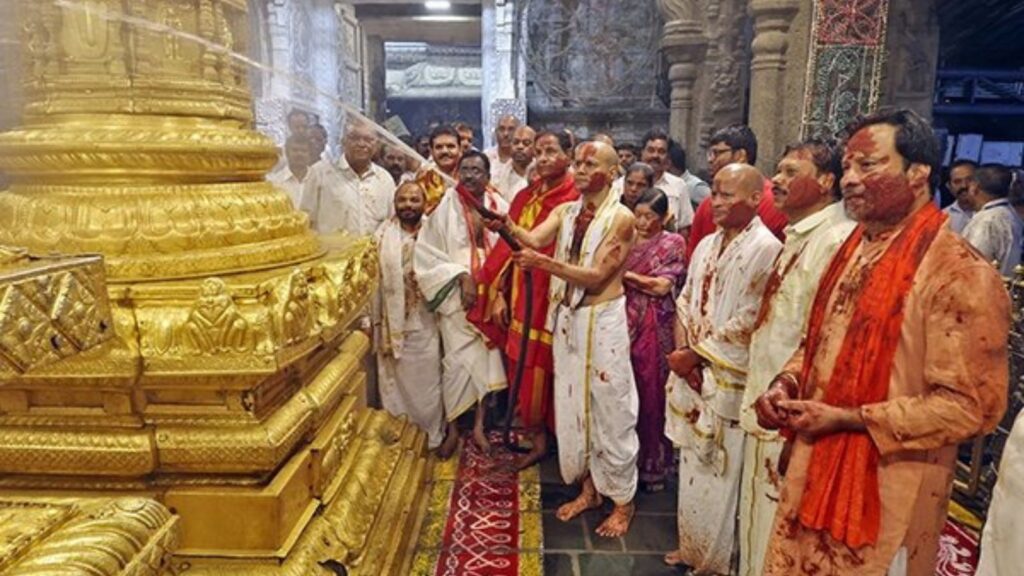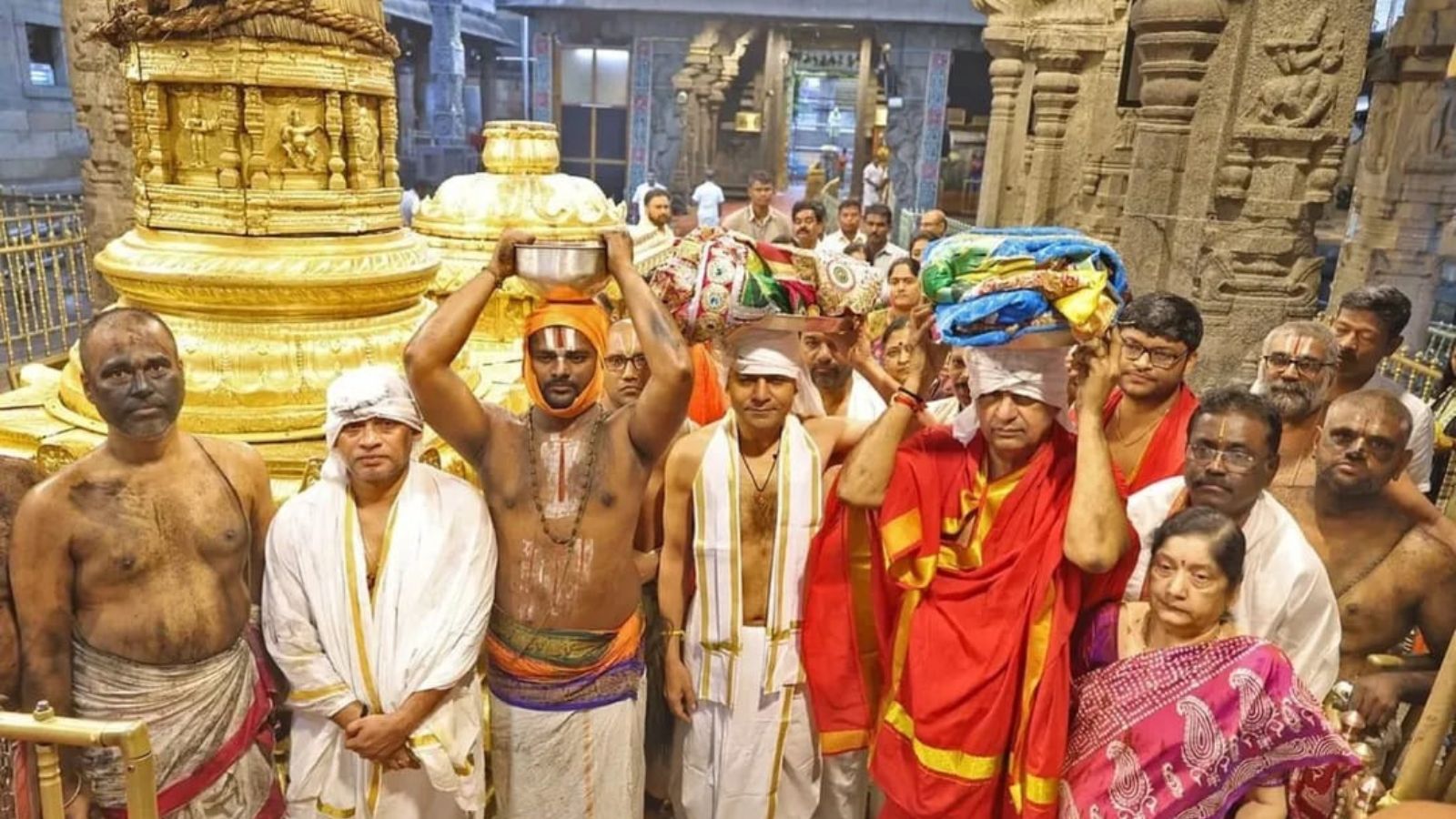Koil Alwar Thirumanjanam is a purification ceremony undertaken at the Lord Venkateswara Temple in Tirumala. The term literally means “cleaning of the holy shrine” in Tamil, with Koil signifying holy shrine, Alwar meaning devotee/sanctified ones, and Thirumanjanam referring to an auspicious bath or cleansing with aromatic ingredients.
The main purpose of the ritual is to cleanse the entire temple, including the sanctum sanctorum (garbha griham). This is done to prepare the temple for major festivals, implying a renewal and a fresh beginning for both the deity and the devotees.
The ceremony is performed four times a year, on the Tuesdays preceding the four most important festivals: Ugadi, Anivara Asthanam, Annual Brahmotsavam, and Vaikuntha Ekadasi.

While we are familiar with Ugadi, Brahmotsavam and Vaikunta Ekadasi, Anivara Asthanam is a ceremonial festival that marks the beginning of the new financial year’s accounting. During this ritual, the previous year’s accounts are presented to Lord Venkateswara, and a new set of account books are opened for the upcoming year. This tradition, which historically began on the last day of the Tamil month of Aani, signifies seeking the Lord’s divine approval for the temple’s administration.
During the ritual, the main idol of Lord Venkateswara is covered with a special waterproof cloth. All other deities and sacred articles are temporarily removed from the sanctum. The entire area, including walls, ceilings, vimanam and floors, is meticulously cleaned with water and then smeared with a special aromatic and disinfectant paste called ‘Parimalam‘. This paste is a mixture of camphor, sandal paste, saffron, turmeric, and other aromatic substances. After the cleansing, the main deity is uncovered, and all the idols and articles are placed back, followed by special prayers and offerings.



